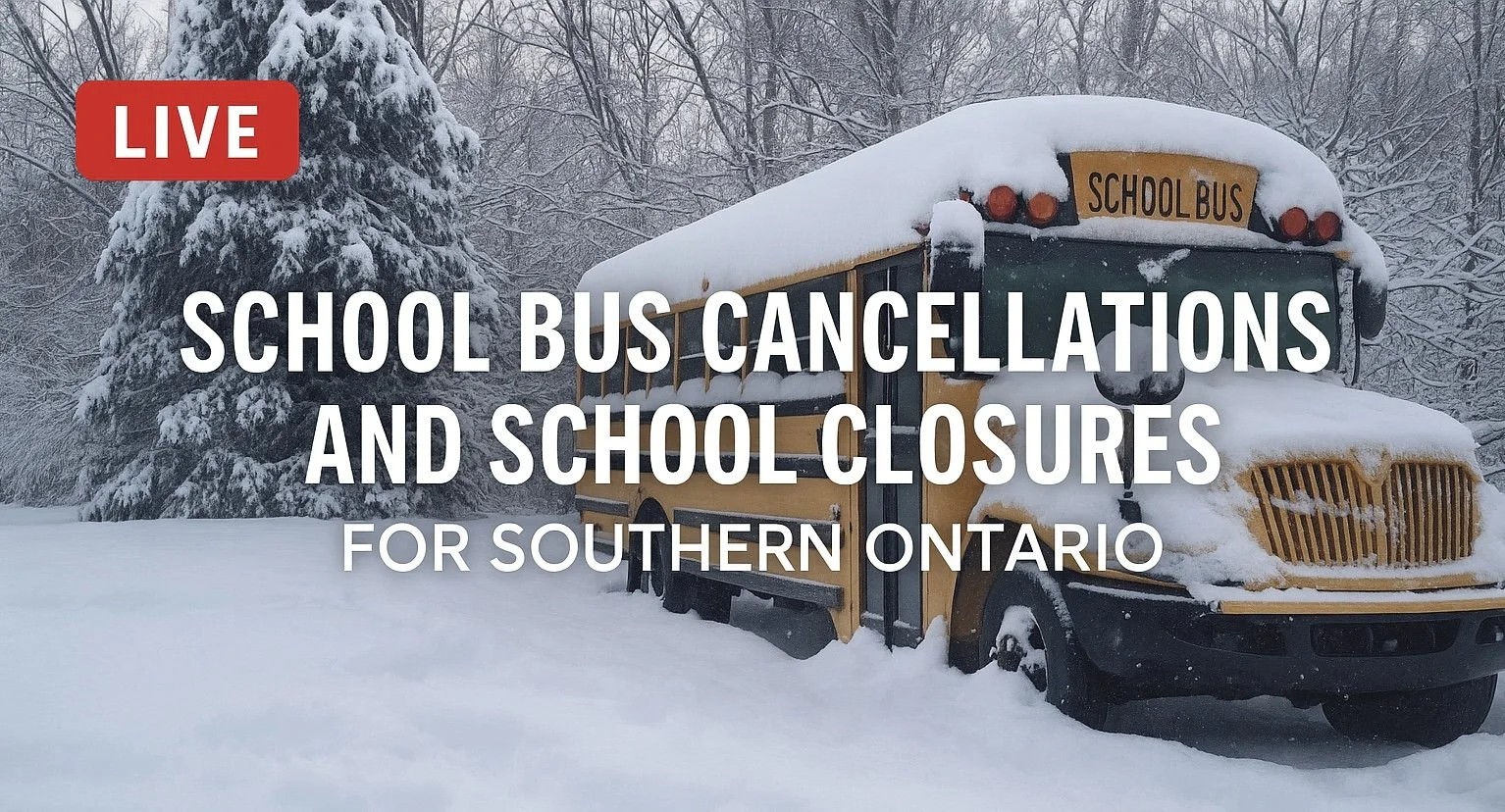Return of Squalls to Ontario’s Snowbelt This Week With Blizzard Conditions & Over 50cm of Snow Possible
/While the brief break from lake-effect snow earlier this month brought milder air and rain to the snowbelt regions, the respite appears to be short-lived.
Snow squall activity is expected to make a comeback as we approach the end of the week. With multiple days of snow squalls anticipated, we could once again see impressive snowfall totals, rivaling those from earlier this month.
Colder air will begin to filter into Southern Ontario from the northwest late Wednesday afternoon, dropping temperatures below freezing through the evening. This influx of cold air will trigger the development of lake-effect snow bands, with ideal conditions persisting through Thursday and into Friday.
Current projections suggest two primary zones will bear the brunt of the snow squalls: one east of Lake Huron and the other southeast of Georgian Bay. The Lake Huron squall is expected to impact southern portions of Grey and Bruce counties, including Owen Sound, Chatsworth, and Meaford. Meanwhile, the Georgian Bay squall will likely target central Simcoe County, extending northward into southern Muskoka.
Snowfall totals in the hardest-hit areas could exceed 50 cm, with the possibility of approaching the staggering 100 cm seen in Bracebridge and Gravenhurst earlier this month. Whether such totals materialize depends on whether any of the snow squall bands remain stationary for extended periods.
To make matters worse, strong winds are expected to develop late Wednesday and persist into Thursday morning. Gusts could reach 60–80 km/h, particularly in Grey-Bruce and Simcoe County, significantly reducing visibility and creating hazardous travel conditions.
Blizzard conditions may develop, and travel is strongly discouraged during this timeframe. School bus cancellations are almost certain along the Lake Huron and Georgian Bay shorelines on Thursday.
HOURLY SNOWFALL RATE/intensity - MAP FROM WEATHERBELL
The lake-effect snow is expected to begin late Wednesday afternoon, with the first band forming off Lake Huron. Initially driven by northwesterly winds, this band will target areas near Goderich before shifting northward as winds veer to a more westerly direction by evening.
HOURLY SNOWFALL RATE/intensity - MAP FROM WEATHERBELL
By midnight, the main Lake Huron squall is expected to become stationary, affecting areas from Wiarton southward to Port Elgin, Owen Sound, and Meaford. Simultaneously, snow bands will begin forming off Georgian Bay, initially targeting Wasaga Beach, Midland, and Orillia. These may briefly lift northward Thursday morning, potentially reaching Gravenhurst and Bracebridge.
HOURLY SNOWFALL RATE/intensity - MAP FROM WEATHERBELL
The most intense conditions are forecast for late Thursday morning into the afternoon. Two main corridors of concern are expected: Owen Sound to Collingwood off Lake Huron, and Wasaga Beach to Orillia off Georgian Bay. Snowfall rates will be exceptionally high, and the squalls could remain locked in place for 6–12 hours, leading to rapid accumulation.
Strong wind gusts during this period could result in blizzard conditions, with near-zero visibility on roads. Road and highway closures are likely in the hardest-hit areas, especially on Thursday.
By late Thursday night, the snow squalls may shift into the Bruce Peninsula and Muskoka regions. While the bands are expected to weaken by Friday morning, lingering activity could still produce scattered flurries before tapering off completely by the afternoon.
As with previous lake-effect events, it’s important to remember that these snow squalls are highly localized. Narrow bands of snow, often only a few kilometres wide, can result in dramatically different conditions over short distances. One location might see over 50 cm of snow while areas just a few kilometres away remain relatively unscathed.
We currently have high confidence in two zones being hardest hit: southern portions of the Bruce Peninsula, including Owen Sound, Chatsworth, Meaford, and Flesherton, and areas west of Orillia, including Midland and Coldwater. Accumulations in these regions could exceed 50 cm, with totals potentially nearing 100 cm if squalls remain stationary long enough. A more conservative estimate is 50–75 cm.
A wider swath of Grey-Bruce, including Kincardine, Port Elgin, Hanover, Lion’s Head, and Tobermory, as well as much of Simcoe County and northern portions of Kawartha Lakes, Gravenhurst, and Beaverton, could see 25–50 cm. Not all areas in this zone will hit these totals, as much depends on the placement and movement of the snow bands.
Further south and away from the snowbelt, accumulation decreases rapidly. Barrie itself may largely miss the snow, although it could see up to 25 cm if the bands shift slightly. The Georgian Bay squall may extend inland at times, bringing heavy snow to Lindsay and Peterborough, with 10–20 cm possible in these areas.
For regions in other parts of the snowbelt, including Muskoka, Parry Sound, Haliburton, and parts of Dufferin, Wellington, Perth, and Huron counties, totals are expected to range from 10–20 cm. The Golden Horseshoe, including London, Kitchener, and Guelph, will likely see only light flurries, with less than 5 cm expected.










